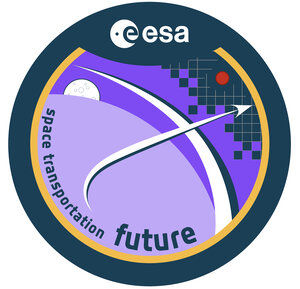Julika Wolf - YGT in Earth Observation Data Visualization
Tell us about your work experience in ESA so far. What does your role entail?
I started working at ESA’s Centre for Earth Observation in Frascati about one and a half years ago, where I am part of a small team informally known as the ‘phi-visuals’. We’re supporting ESA’s communication activities on Earth Observation by turning satellite data into visuals that aim to tell the story of our changing planet and how satellites can be used to study these changes. Think of a timelapse animation of the disappearing Amazon rainforest, the growth of a mega city, a global map of sea level rise, a before-after comparison of air pollution in Europe during the first COVID-19 lockdown, to name a few – it’s quite likely you have seen some of our work on ESA’s website or on social media, or even in the news. My role within the team is the development of new content and narratives focused on climate change for the Phi-Experience (our multimedia visitor centre) as well as the production of visuals for our other outreach activities.
What has motived you to study these subjects?
I think of myself as a hopeless case of a ‘multipotentialite’. This means that rather than feeling one true calling in life, I get fascinated by every imaginable topic. When hooked on a new interest, I soak up new knowledge with the speed of light until I no longer feel challenged, then I get bored and need some change to keep up the intellectual stimulation. This has made it difficult and stressful to decide on a single career path. I ended up taking the unconventional road of first studying Liberal Arts and Sciences (LAS) in the Netherlands. LAS is an interdisciplinary programme allowing for ample freedom to design your own curriculum. Since I wanted to learn more about the natural world, I chose Earth and environmental sciences as my major, but simultaneously took courses in linguistics, ethics, logic, and other subjects. I then specialized in physical geography in Sweden, as I like viewing Earth as one large interconnected system, and given the current environmental challenges we face, I wanted to have a job that would make at least a small meaningful contribution.
What is the most exciting part of your job?
That it’s so multifaceted! Sometimes it feels like I get to be scientist, journalist, storyteller, and artist all at once. I can nourish my need for creative expression and aesthetics through the creation of beautiful visuals, and at the same time, the scientific part of me gets to read research papers in search of new ideas, learns about different satellite technologies and data processing, all while I get to communicate on a topic close to my heart. It’s also very satisfying and makes me proud to see how large of an outreach the work of our team has (for instance, a few months ago, my colleague’s map of the A-76 iceberg breaking off Antarctica was featured in the New York Times).
What advice would you give to girls interested in pursuing a career or studies in STEM?
Follow your curiosity and see where that leads you next. Just go for whatever sparks your interest, give it a try, let go off the pressure to come up with a perfect ten-year plan! Unfortunately, impostor syndrome is widespread among ambitious people, especially among young women in sciences. Sometimes it’s hard to consciously catch ourselves how we are shutting the door to a promising opportunity because walking through that door would entail a real challenge and a risk of not performing at some sky-high level of perfection. I had the luck that I had fantastic mentors along the way that reminded me that what I am doing is good enough in times of self-doubt. So, if you are feeling both excitement and fear about pursuing a specific career – go get curious about your fear, invite it for tea, and find out how justified its existence really is.















 Germany
Germany
 Austria
Austria
 Belgium
Belgium
 Denmark
Denmark
 Spain
Spain
 Estonia
Estonia
 Finland
Finland
 France
France
 Greece
Greece
 Hungary
Hungary
 Ireland
Ireland
 Italy
Italy
 Luxembourg
Luxembourg
 Norway
Norway
 The Netherlands
The Netherlands
 Poland
Poland
 Portugal
Portugal
 Czechia
Czechia
 Romania
Romania
 United Kingdom
United Kingdom
 Slovenia
Slovenia
 Sweden
Sweden
 Switzerland
Switzerland


























